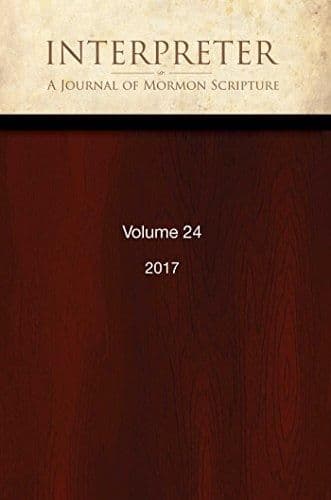Journal
Nephi’s Good Inclusio

Title
Nephi’s Good Inclusio
Publication Type
Journal Article
Year of Publication
2016
Authors
Bowen, Matthew L. (Primary)
Journal
Interpreter: A Journal of Latter-day Saint Faith and Scholarship
Pagination
181-195
Volume
17
Abstract
As John Gee noted two decades ago, Nephi is best explained as a form of the Egyptian word nfr, which by Lehi’s time was pronounced neh-fee, nay-fee, or nou-fee. Since this word means “good,” “goodly,” “fine,” or “fair,” I subsequently posited several possible examples of wordplay on the name Nephi in the Book of Mormon, including Nephi’s own autobiographical introduction (1 Nephi 1:1: “I, Nephi, having been born of goodly parents … having had a great knowledge of the goodness and the mysteries of God”). It should be further pointed out, however, that Nephi also concludes his personal writings on the small plates using the terms “good” and “goodness of God.” This terminological bracketing constitutes a literary device, used anciently, called inclusio or an envelope figure. Nephi’s literary emphasis on “good” and “goodness” not only befits his personal name, but fulfills the Lord’s commandment, “thou shalt engraven many things … which are good in my sight” (2 Nephi 5:30), a command which also plays on the name Nephi. Nephi’s autobiographical introduction and conclusion proved enormously influential on subsequent writers who modeled autobiographical and narrative biographical introductions on 1 Nephi 1:1-2 and based sermons — especially concluding sermons — on Nephi’s “good” conclusion in 2 Nephi 33. An emphasis in all these sermons is that all “good”/“goodness” ultimately has its source in God and Christ.
Subject Keywords
Bibliographic Citation
Terms of use
Items in the BMC Archive are made publicly available for non-commercial, private use. Inclusion within the BMC Archive does not imply endorsement. Items do not represent the official views of The Church of Jesus Christ of Latter-day Saints or of Book of Mormon Central.